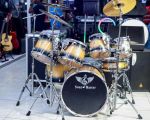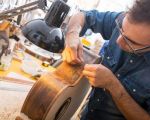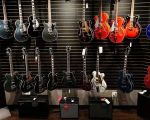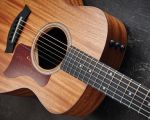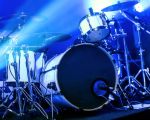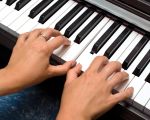How to Practice Music Without an Instrument: Effective Techniques for Musicians
- The Importance of Practicing Music Without an Instrument
- Mental Practice Techniques for Musicians
- How to Improve Your Ear Training Without an Instrument
- The Benefits of Visualization in Music Practice
- Apps and Tools for Practicing Music Without an Instrument
As a musician, you know how important it is to practice regularly, but what happens when you don't have access to your instrument? Whether you're traveling, stuck at home, or just need a break from physical practice, you can still enhance your musical skills without playing a single note on your instrument. "How to practice music without an instrument?" you may ask. It’s easier than you think! In this article, I’ll share some effective techniques for practicing music mentally, improving your ear training, and utilizing technology to enhance your musical abilities when you're away from your instrument.
1. The Importance of Practicing Music Without an Instrument
Practicing without an instrument might seem counterintuitive, but it can be just as effective in improving your musicality as physical practice. I’ve learned from personal experience that mental practice can actually enhance your technical skills, help with memorization, and even improve your musical intuition. When you don’t have your instrument, practicing mentally allows you to focus on different aspects of your music, such as rhythm, harmony, and musical phrasing, without the physical distraction of playing. Moreover, it allows you to mentally "rehearse" music anywhere, at any time, making it an incredibly convenient and valuable tool for any musician.
2. Mental Practice Techniques for Musicians
There are several mental practice techniques that I’ve found to be incredibly effective in improving my musicianship without needing an instrument. Here are a few strategies that you can try to boost your musical skills while not physically playing your instrument:
2.1. Visualization
Visualization is one of the most powerful mental practice techniques. This involves mentally playing your instrument and imagining yourself performing a piece of music. In my own experience, I’ve used visualization to practice challenging pieces. I close my eyes and mentally "play" each note of the song, visualizing my fingers on the instrument and hearing the sound. This technique not only strengthens memory recall but also helps with technique, as it allows you to practice finger placements, hand positioning, and the physical movements required for a piece, even when away from your instrument.
2.2. Practicing Rhythms in Your Head
Another great technique is mentally practicing rhythms. You don’t need an instrument to practice your rhythm and timing. Simply tap your feet, clap your hands, or nod your head to the beat as you mentally play a piece of music. This can help you internalize the rhythm and improve your timing when you’re ready to play the piece on your instrument. I use this technique often when preparing for a performance or practicing complex rhythms, and it has made a huge difference in my ability to play confidently when I return to my instrument.
2.3. Score Analysis
Studying sheet music away from your instrument is a fantastic way to deepen your understanding of the music you're playing. I often find myself analyzing scores without picking up my instrument, paying attention to dynamics, phrasing, articulations, and harmonic structures. This helps me learn the music more thoroughly and strengthens my ability to interpret it expressively when I finally play. Try focusing on one section of a piece at a time, analyzing the music’s structure, chord progressions, and key changes. This builds a stronger mental connection to the piece, making it easier to play when you're ready to pick up your instrument.
3. How to Improve Your Ear Training Without an Instrument
Ear training is essential for any musician, but it’s often one of the hardest skills to develop without a real instrument. Fortunately, there are several ways to improve your ear training without needing your instrument nearby. These methods can help you sharpen your musical ear and become more attuned to pitch, intervals, chords, and rhythms:
3.1. Active Listening
Active listening involves listening to music with a focused, analytical approach. I’ve found that carefully listening to recordings of your favorite music—whether classical, jazz, or pop—helps develop a deeper understanding of musical elements like melody, harmony, and rhythm. While listening, try to identify the instruments, the key changes, and the rhythms. This kind of practice strengthens your aural skills and helps you become more aware of musical nuances when you do have access to your instrument.
3.2. Solfege and Interval Training
Solfege (do-re-mi) is a fantastic tool for ear training, and you don’t need an instrument to practice it. By singing solfege syllables or using apps that help with pitch recognition, you can train your ear to identify musical intervals and pitches. This improves your ability to recognize notes and intervals quickly when you start playing. I’ve also used interval training apps on my phone to practice identifying intervals by ear. This has become an invaluable skill for me when it comes to sight-reading or improvising on my instrument.
4. The Benefits of Visualization in Music Practice
Visualization isn’t just a technique for practicing rhythms or memorizing pieces—it can also help you improve your overall musicianship in other areas. I’ve found that visualization helps me mentally "rehearse" performances, especially when preparing for an audition or concert. By imagining myself performing a piece, I can reduce performance anxiety and mentally rehearse the nuances of my playing, such as phrasing and articulation. It’s like a mental dress rehearsal before the actual performance, and it helps me feel more confident and prepared when it’s time to perform.
5. Apps and Tools for Practicing Music Without an Instrument
Technology can be an incredible asset in your practice routine, especially when you don’t have access to an instrument. There are several apps and tools available to help musicians practice, even when away from their instrument:
5.1. Ear Training Apps
Ear training apps are some of the best tools for practicing music without an instrument. Apps like Tenuto and Perfect Ear offer exercises for interval recognition, chord identification, and rhythm practice. These apps allow you to train your ear anywhere, helping you improve your musical skills without needing an instrument in hand.
5.2. Metronome Apps
Practicing with a metronome is key to developing strong timing and rhythm, and there are plenty of metronome apps available for your phone. I personally use the "Metronome Beats" app, which allows me to practice rhythms, tempos, and time signatures on the go. It’s an indispensable tool when I’m working on timing and rhythm during mental practice sessions.
Practicing music without an instrument is not only possible, but it’s also an incredibly useful tool for any musician looking to improve their skills. Whether it’s through visualization, ear training, or using technology to support your practice, there are plenty of ways to continue developing as a musician, even when you’re not physically playing your instrument. Start incorporating these techniques into your routine today, and watch your musicality grow!

